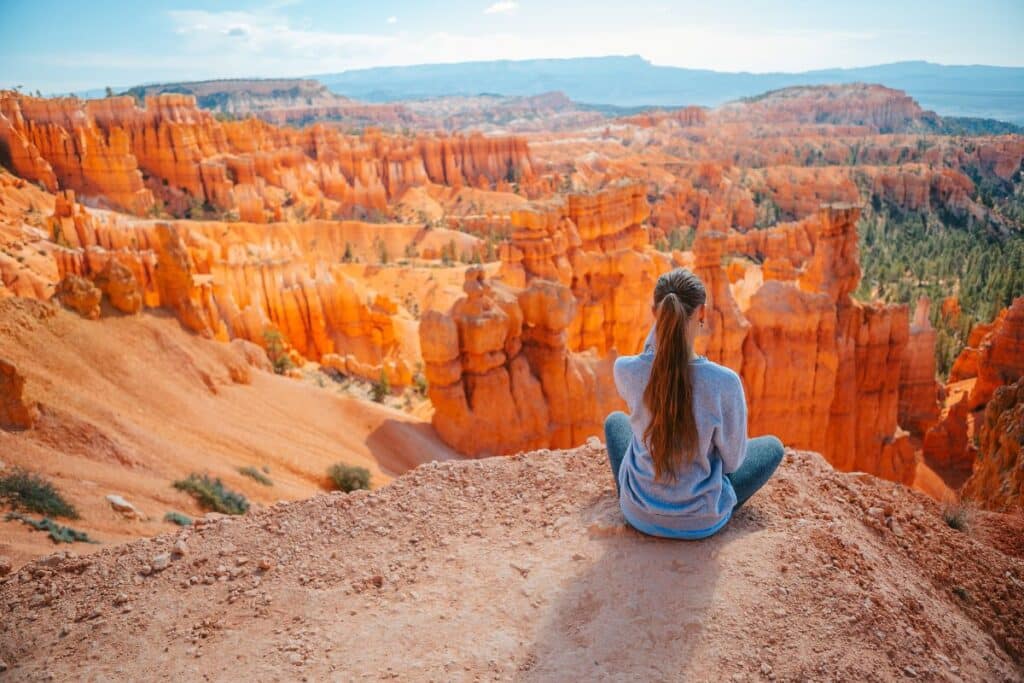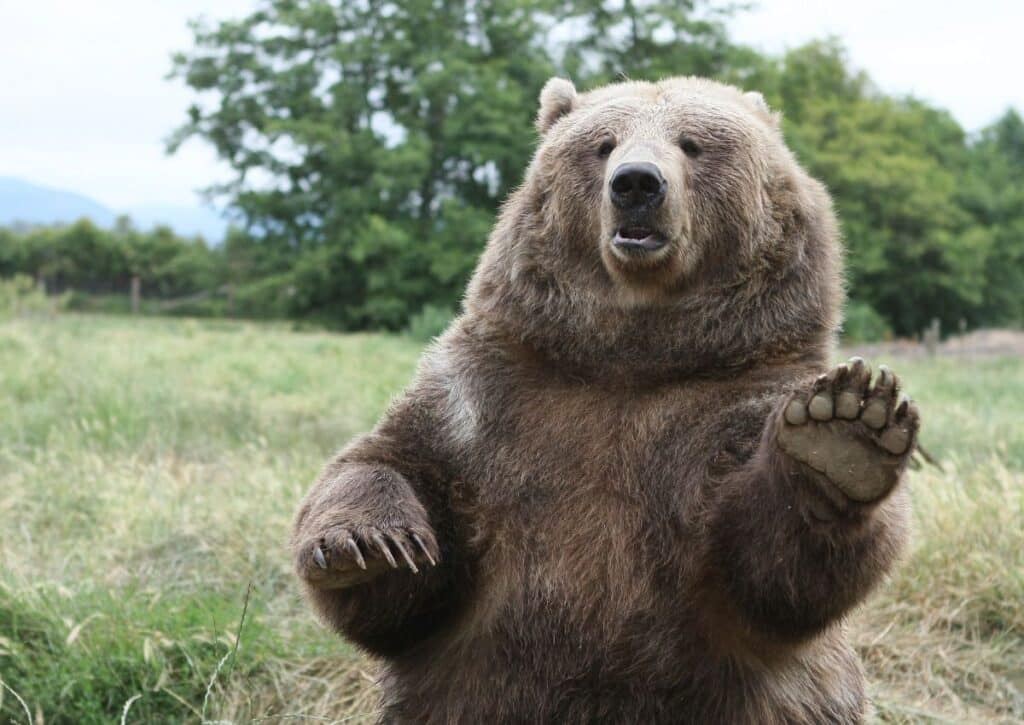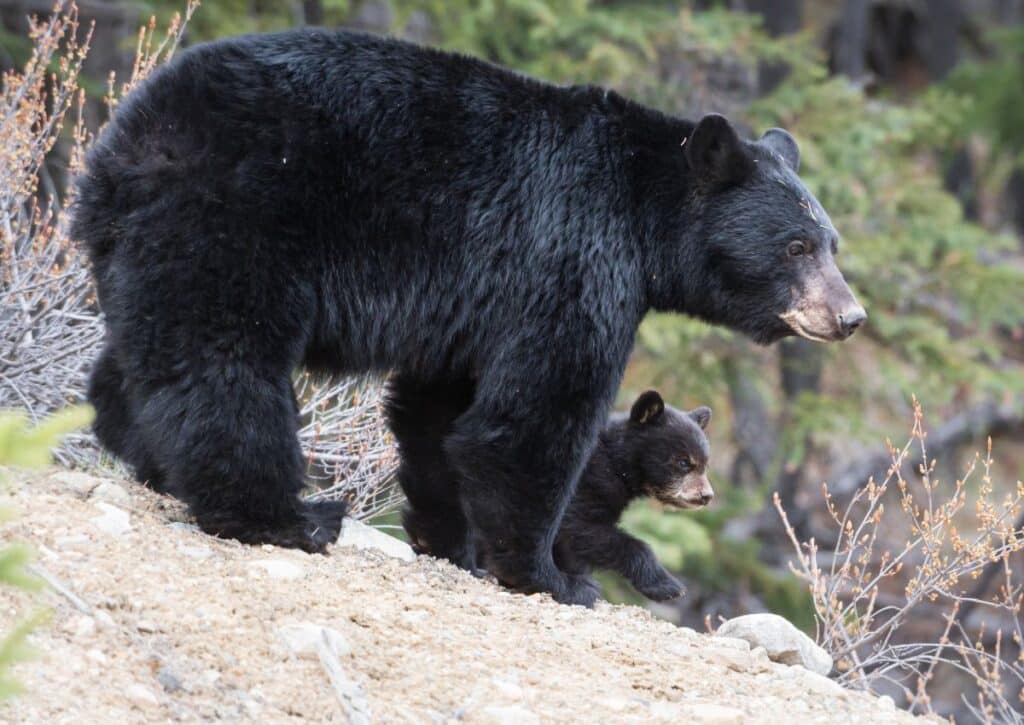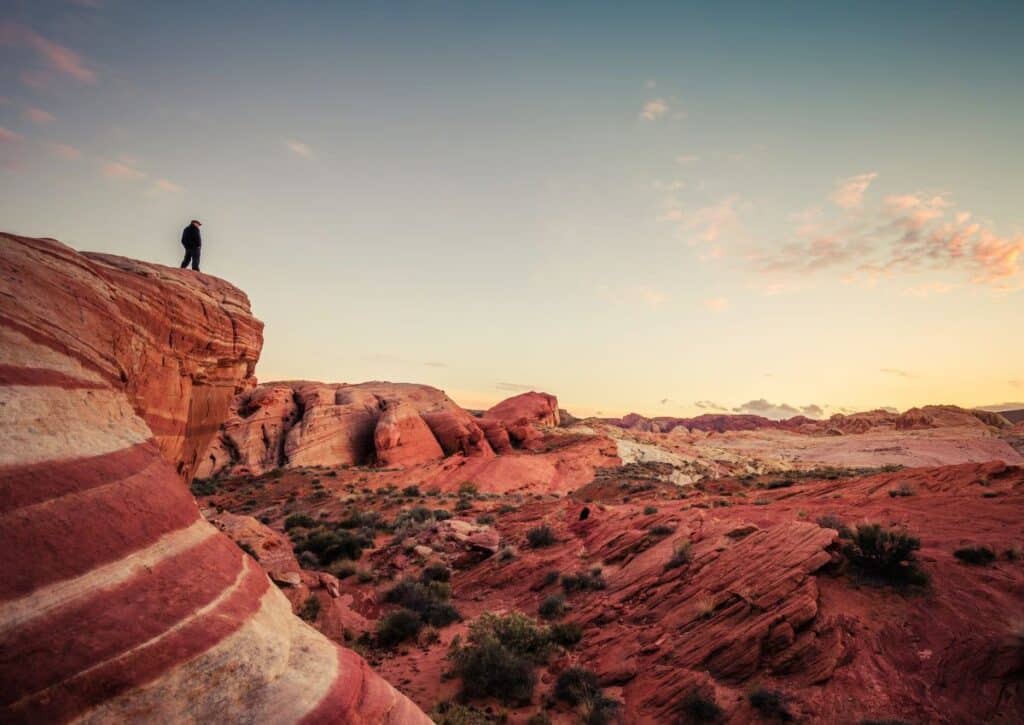Discover fascinating facts about Bryce Canyon National Park, from unique hoodoos to rich history and stunning vistas. Explore now!
Get ready to dive into the wonders of Bryce Canyon National Park, a place where nature’s artistry is on full display! This guide is your ticket to uncovering the secrets of a landscape that’s more than just a pretty view.
Did you know that those towering spires, called hoodoos, were formed by the simple act of freezing and thawing water? Or that Bryce Canyon isn’t actually a canyon?
We’ll take you through the park’s fascinating geology, introduce you to ancient bristlecone pines that have been around for over 1,600 years, and share the best spots for stargazing under one of the darkest skies in North America.
Whether you’re planning a leisurely walk along the Rim Trail or gearing up for a backcountry adventure, this guide has something for everyone.
Packed with practical tips and intriguing facts, get ready to explore Bryce Canyon in a way you never imagined!
The Unique Geology of Hoodoos
Bryce Canyon’s iconic hoodoos are a marvel of natural architecture, formed through a process called frost wedging. The region’s climate plays a pivotal role in this geological phenomenon.
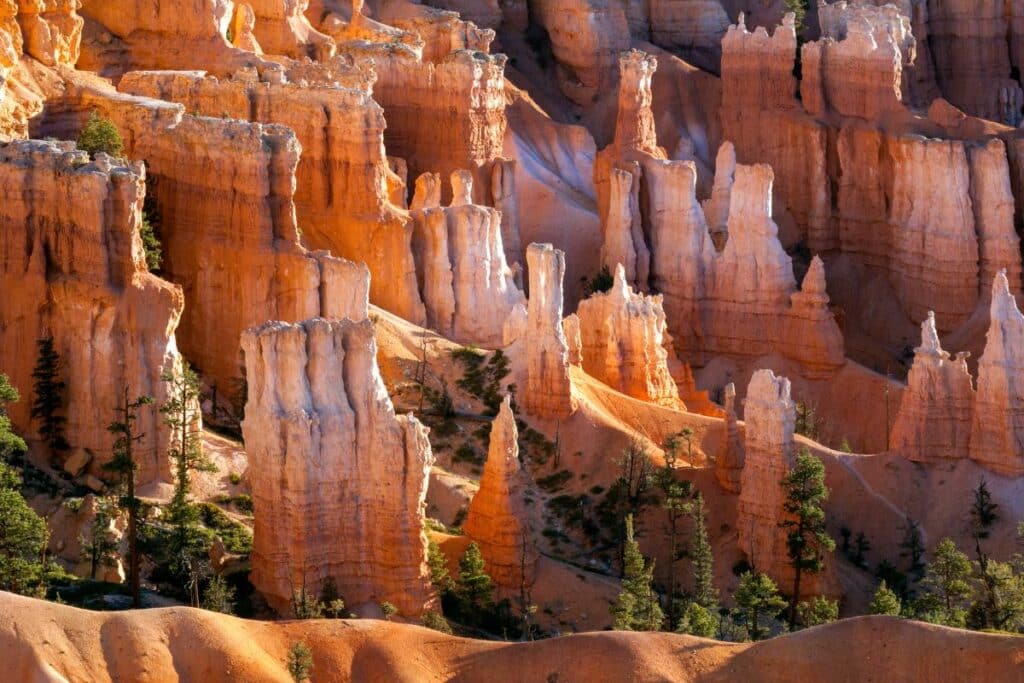
During the day, water seeps into the cracks of the rocks. As temperatures drop at night, especially in the colder months, this water freezes and expands, gradually widening the cracks.
Over years, this freeze-thaw cycle results in the unique limestone spires that can tower over 200 feet. The park contains the largest collection of hoodoos in the world.
For visitors keen on observing these formations up close, the Rim Trail and Navajo Loop are excellent choices. The best times to view the hoodoos are during sunrise or sunset, when the light casts dynamic shadows and brings out the vibrant colors of the rocks.
Understanding this geological process enhances the appreciation of these formations and provides a unique perspective when exploring the park.
Not Really a Canyon
Contrary to its name, Bryce Canyon is not a single canyon but a series of natural amphitheaters or bowls, carved into the edge of a high plateau.
The main structure, Bryce Amphitheater, is the most famous and largest among them. This distinction is important for visitors as it impacts how one experiences the park.
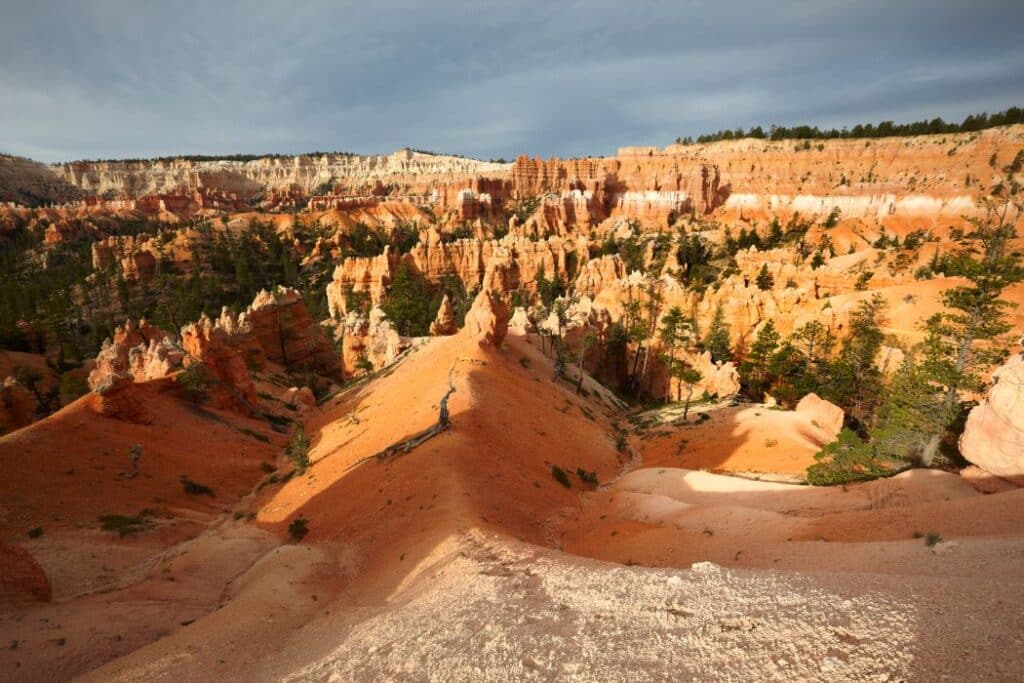
Unlike a traditional canyon where one might look up at the rock formations from the bottom, in Bryce Canyon, you are often looking down from the rim into the hoodoos and spires.
This elevation ranges from 8,000 to 9,000 feet, offering expansive views. The park’s unique layout means that many of the most spectacular views are easily accessible from the park’s scenic drive, which includes 13 viewpoints over its 18-mile length.
For those looking to explore the amphitheaters more intimately, there are trails that descend into the bowls, such as the Queen’s Garden and Peek-A-Boo Loop trails. Understanding the park’s topography helps in planning hikes and viewpoints to visit.
A Haven for Stargazers
Bryce Canyon National Park is a certified International Dark Sky Park, a designation that underscores its exceptional quality of starry nights and nocturnal environment.
This status makes it an ideal destination for stargazers. The park’s high elevation and clean, dry air contribute to its incredibly clear night skies, offering breathtaking views of constellations, planets, and the Milky Way.
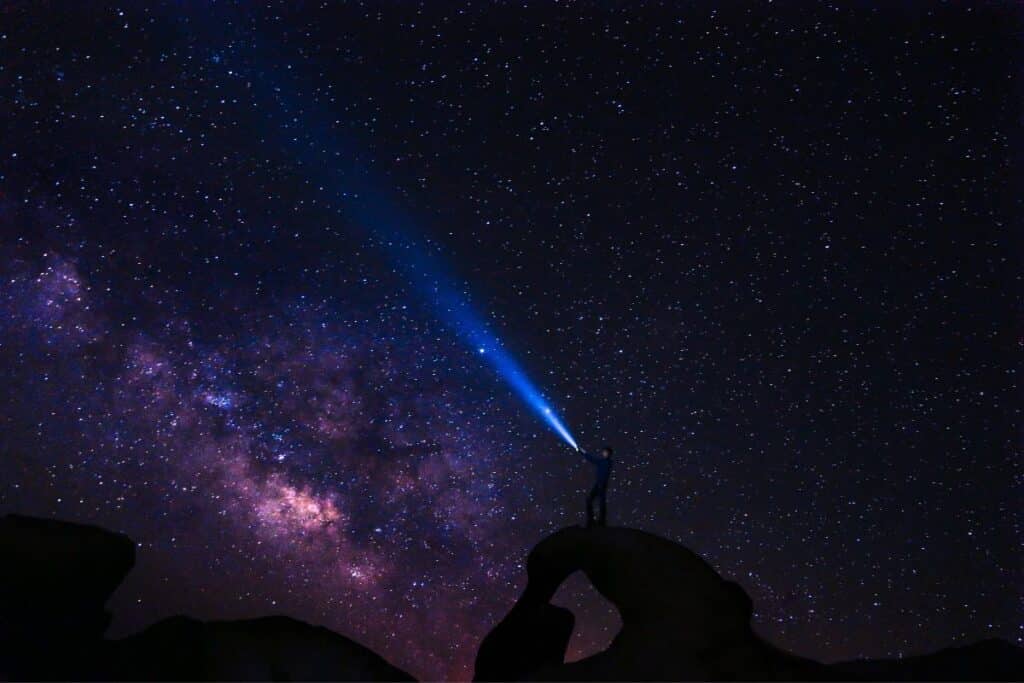
For the optimal stargazing experience, visitors should plan their trip around the new moon phase when the sky is darkest. The park organizes regular astronomy programs, including telescope viewing and guided constellation tours, which are typically offered from spring through fall.
Winter offers an added advantage, as the colder air is even clearer, though visitors should be prepared for snow and cold temperatures.
The park’s annual Astronomy Festival, usually held in June, is a highlight, featuring guest speakers, astronomy workshops, and additional telescope viewings.
For those planning a night of stargazing, the areas around Sunrise, Sunset, Inspiration, and Bryce Points offer some of the most unobstructed and expansive views of the night sky.
The Inspiration Behind Fairyland Point
Fairyland Point offers one of the most breathtaking and less crowded vistas in Bryce Canyon National Park. The name itself evokes a sense of wonder, inspired by its otherworldly landscape.
This area is characterized by a dense collection of hoodoos and rock formations that create a maze-like appearance, reminiscent of a mythical land.
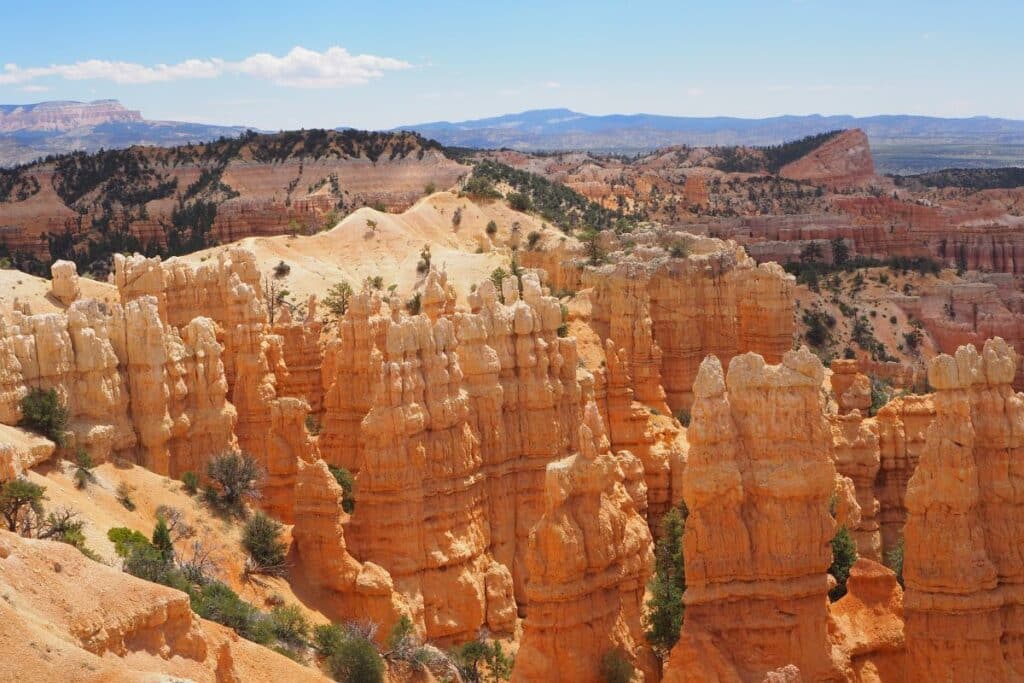
For visitors, Fairyland Point is the starting point of the Fairyland Loop Trail, an 8-mile hike that offers an immersive experience into this unique terrain.
The trail is considered moderate to strenuous, so it’s important for hikers to be well-prepared with water, snacks, and proper footwear.
The best times to visit are during early morning or late afternoon, when the sunlight enhances the natural red, orange, and white hues of the rocks.
Photographers especially will find this time ideal for capturing the stunning landscape.
Additionally, its location away from the main amphitheater means that it offers a more secluded and tranquil experience, perfect for visitors looking to escape the more crowded viewpoints.
Home to the Bristlecone Pine
Bryce Canyon is not just famous for its geological formations but also for being home to the ancient Bristlecone Pines. Some of these trees in the park are over 1,600 years old, making them among the oldest living organisms on Earth.
These trees are known for their resilience and ability to survive in harsh conditions with minimal soil.
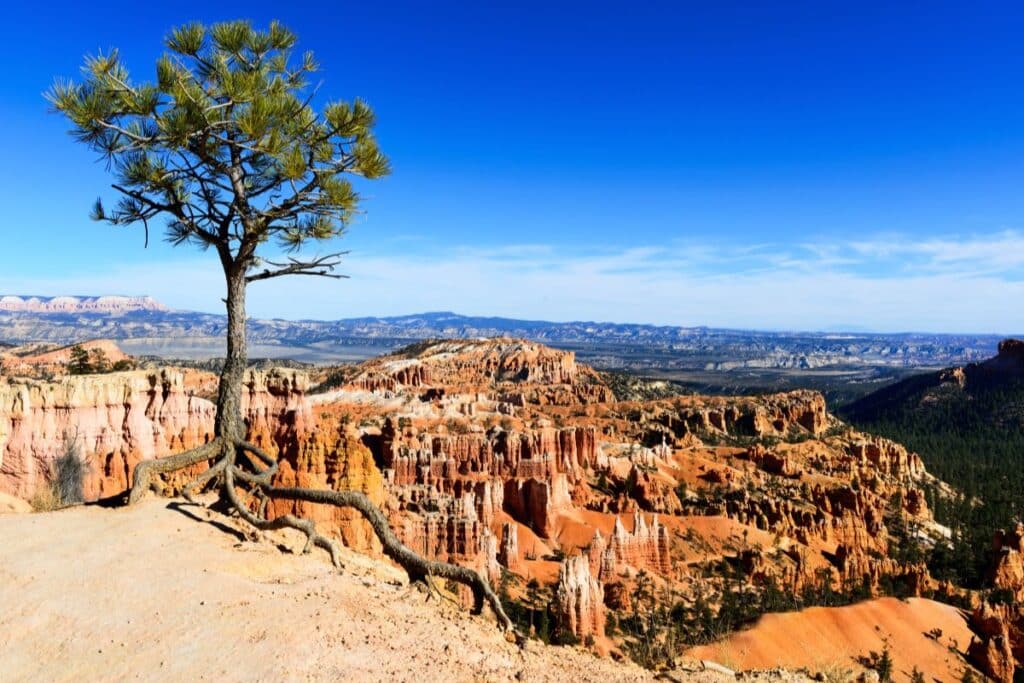
The Riggs Spring Loop Trail and the Bristlecone Loop Trail are the best paths to view these ancient trees. The Bristlecone Loop is an easy 1-mile hike and is highly recommended for those interested in seeing these remarkable trees up close.
The trail is not only an opportunity to witness these ancient pines but also offers spectacular views of the canyon. The Bristlecone Pines are a testament to the enduring nature of life and provide a unique perspective on the park’s ecosystem.
For nature enthusiasts and photographers, these trails offer a serene experience, surrounded by the history and resilience of these extraordinary trees.
The Richness of Native American History
Bryce Canyon’s history is deeply intertwined with the Native American cultures, particularly the Paiute tribe. The Paiutes have inhabited the region for centuries and have a rich history and connection to the land.
They named the hoodoos “Anka-ku-wass-a-wits,” meaning “red painted faces,” which is reflective of their spiritual significance to the tribe.
Visitors interested in this aspect of the park’s history can explore the Indian Village, a reconstructed Paiute village that offers insights into their traditional lifestyle.
The park also offers cultural demonstrations and interpretive programs that delve into the Paiute culture and history. These programs are not only educational but also provide a deeper understanding and appreciation of the park’s cultural significance.
For those looking to explore further, the Paiute Trail System outside the park offers a journey through landscapes that have been part of the Paiute heritage for generations.
Engaging with this rich history enhances the experience of visiting Bryce Canyon, offering a glimpse into the lives of the people who have called this land home long before it became a national park.
The Park’s Discovery by European-American Settlers
Bryce Canyon National Park was first discovered by European-American settlers in the 1850s. The park is named after Ebenezer Bryce, a Mormon pioneer who settled in the area in 1875.
Bryce, originally from Scotland, came to the Paria Valley with his family and famously described the canyon as “a hell of a place to lose a cow.”
He played a significant role in the area’s early development, including the construction of a road to the plateau top for easier access to timber and water.
Visitors interested in this historical aspect can explore the Ebenezer Bryce Cabin, located near the park’s visitor center. The cabin, although not the original, is a replica representing the typical settler life in the 19th century.
Understanding Bryce’s role and the challenges faced by early settlers provides a unique historical context to the park.
This background is particularly interesting for those who appreciate not only the natural beauty but also the human history of the places they visit.
Diverse Wildlife in the Park
Bryce Canyon National Park is home to a diverse range of wildlife, offering visitors the chance to encounter unique species in their natural habitat. The park is inhabited by over 59 species of mammals, including mule deer, mountain lions, and pronghorns.
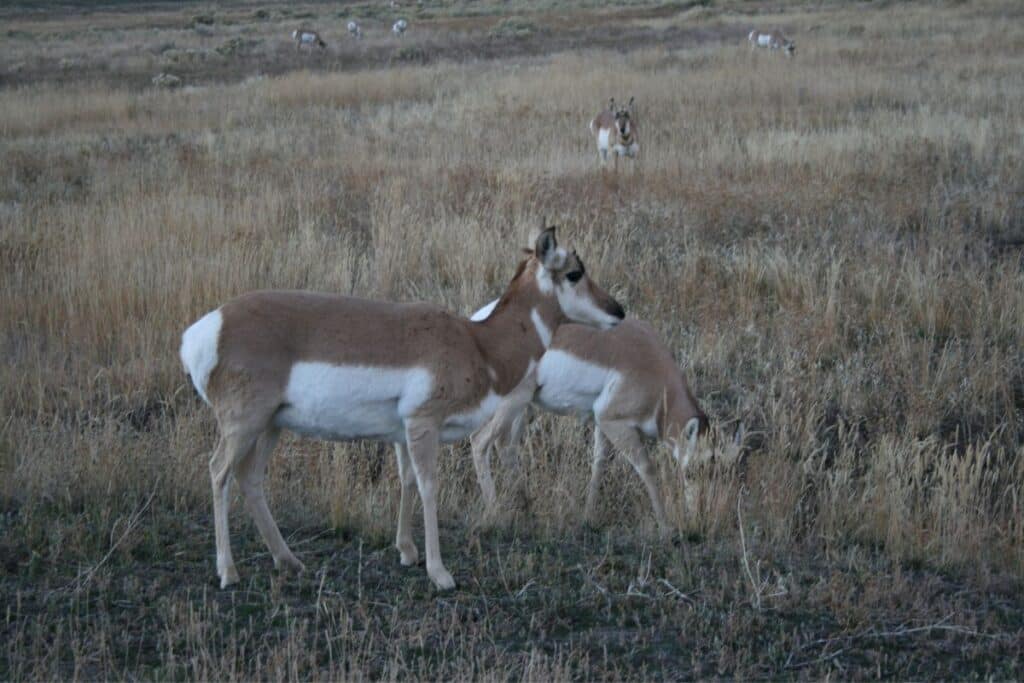
Birdwatchers can spot over 100 species of birds, with the Peregrine Falcon, the California Condor, and the Steller’s Jay being notable mentions.
For wildlife enthusiasts, the best times for animal sightings are during the early mornings or late evenings. The Rim Trail and Bryce Point are excellent spots for observing mule deer, while the underbrush along the park’s trails can be a good place to spot smaller mammals and birds.
Visitors are reminded to maintain a safe distance from wildlife and to respect their natural habitat. This rich wildlife adds an exciting dimension to the Bryce Canyon experience, offering opportunities for wildlife photography and observation.
The Transformation Through Seasons
Bryce Canyon National Park undergoes a dramatic transformation with each season, offering a unique experience throughout the year.
In spring, the snow begins to melt, filling the streams and bringing fresh greenery to the canyon. This season is ideal for those who enjoy mild weather and fewer crowds.
Summer brings warmer temperatures and the vibrant colors of wildflowers. This is the most popular time for visitors, with clear skies and longer days ideal for hiking and sightseeing.
However, afternoon thunderstorms are common, so it’s wise to start hikes early.
Autumn sees a spectacular change in foliage, with the park’s trees displaying vivid hues of orange, red, and yellow. The cooler temperatures and reduced visitor numbers make it a great time for peaceful hiking experiences.
This is our favorite season without doubt!
In winter, the park is transformed into a snowy wonderland, offering a stark contrast with the red rocks and providing opportunities for snowshoeing and cross-country skiing.
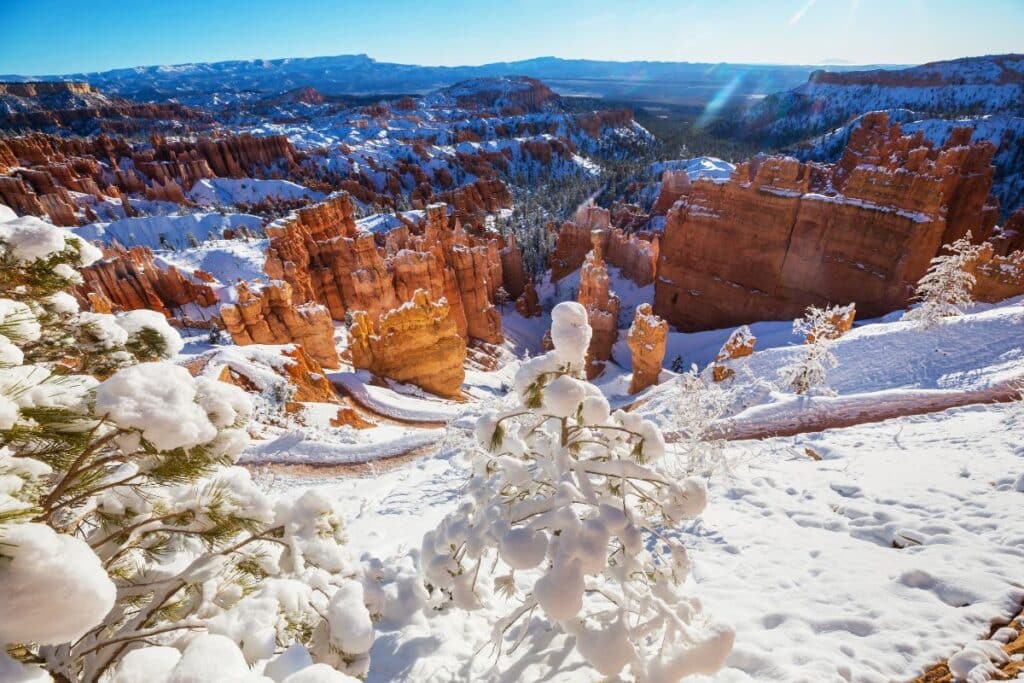
The snow-capped hoodoos create a breathtaking landscape, unique to this season. Winter visitors should be prepared for cold temperatures and snowy conditions.
Each season in Bryce Canyon brings its own unique beauty and challenges, making it a year-round destination for nature lovers and outdoor enthusiasts.
The Wonder of the Natural Bridge
Bryce Canyon National Park is renowned for its Natural Bridge, one of the most photographed features in the park. This impressive natural arch, standing at about 85 feet high, showcases the power of erosion and natural architecture.
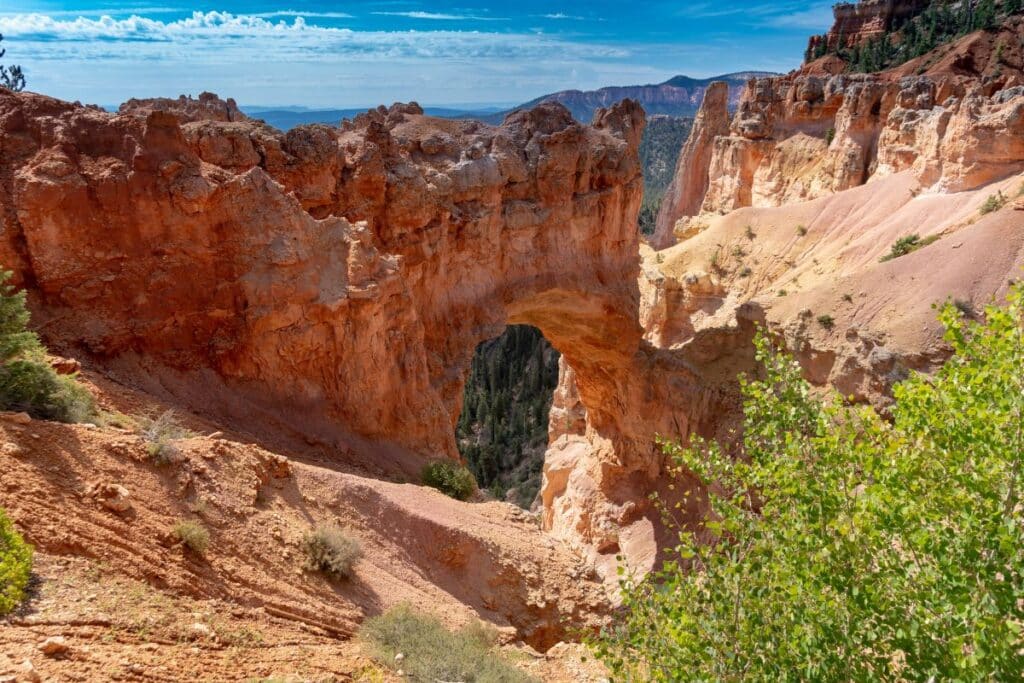
Unlike man-made bridges, this structure was formed by the forces of water and frost erosion acting on limestone.
For visitors, the Natural Bridge is easily accessible via the park’s scenic drive and has a dedicated viewpoint. The site is located approximately 12 miles from the park entrance, making it a convenient stop for those touring the park by car.
The viewpoint offers an excellent opportunity for photography, especially during midday when the sun illuminates the arch.
Visitors should note that despite its name, the Natural Bridge is technically an arch, as it was formed by the erosion of rock rather than the collapse of a cave or other structure.
This distinction highlights the unique geological processes at work in Bryce Canyon and adds an educational aspect to the visit.
The Natural Bridge is a must-see for its awe-inspiring beauty and as a symbol of the natural forces that shape the park.
The Mystery of the Silent City
The Silent City is a mesmerizing cluster of hoodoos and rock formations in Bryce Canyon National Park, evoking the imagery of an ancient, deserted city.
This area, best viewed from the Sunset Point and Inspiration Point, is renowned for its intricate structures that resemble buildings and streets of a cityscape.
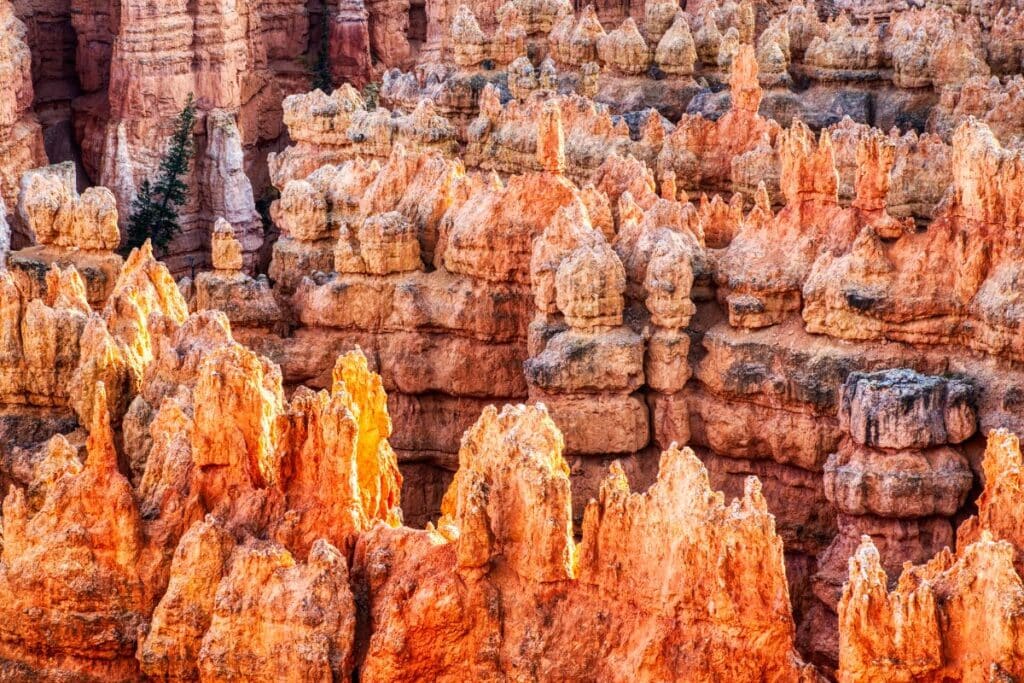
The Silent City is particularly striking at sunrise or sunset, when the play of light and shadow brings out the details in the rock formations, enhancing their city-like appearance.
The area’s name and appearance have given rise to various legends and stories, adding a layer of mystique to the visitor experience.
For hikers, the Navajo Loop and Queen’s Garden trails provide an up-close experience of the Silent City. These trails offer a moderate hike and allow visitors to wander amidst the towering hoodoos, providing a different perspective of the formations.
The Silent City is not just a visual wonder but also a testament to the natural processes of erosion and the geological history of the park. Its captivating appearance and the legends surrounding it make it a highlight for any visitor to Bryce Canyon.
The Color Palette of the Canyon
The color palette of Bryce Canyon is a spectacular display of hues, ranging from soft pinks to bright oranges and deep reds.
These colors are the result of the iron oxide content in the limestone, which oxidizes, similar to rust, creating the red, orange, and yellow colors. The presence of manganese oxides adds shades of lavender and purple.
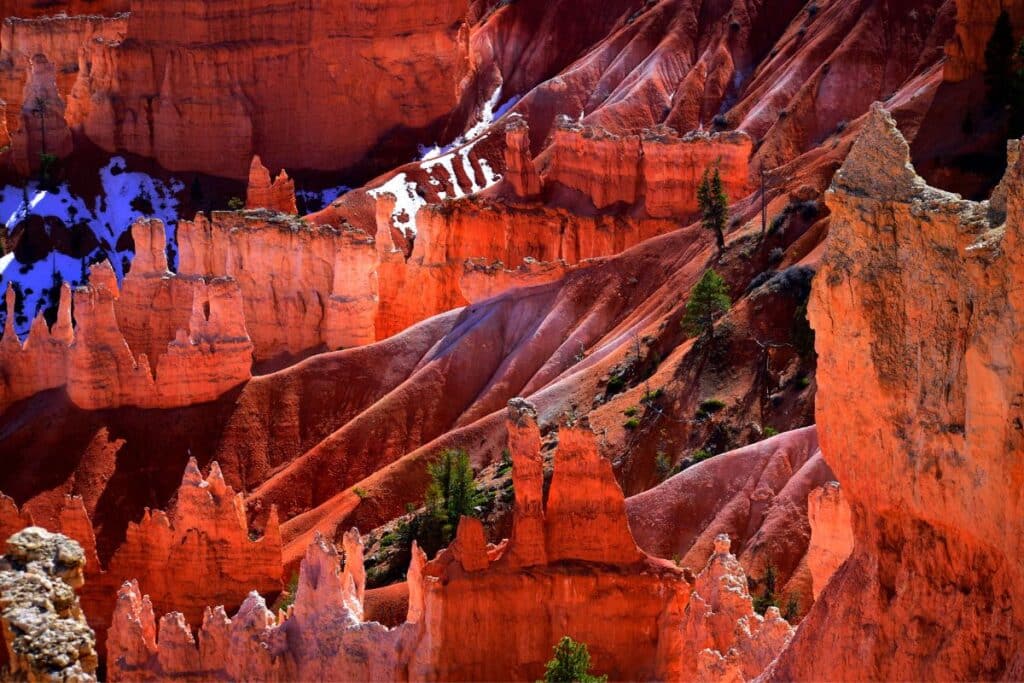
This natural coloration is most vibrant in the amphitheaters of the park, particularly at Sunrise and Sunset Points. The best time to witness the full spectrum of colors is during the golden hours of sunrise and sunset, when the angle of the sun’s rays illuminates the rock formations, enhancing their natural hues.
For photographers and nature enthusiasts, understanding the cause of these colors can enrich the experience of capturing and appreciating the park’s beauty.
The varying colors also indicate different levels of rock hardness, with the darker colors often representing harder rock. This variation in hardness contributes to the unique shapes of the hoodoos and spires, as softer rock erodes more quickly.
The color palette of Bryce Canyon is not only a visual feast but also a storybook of the park’s geological history, making it a key feature for visitors to explore and understand.
Hiking Trails for All Skill Levels
Bryce Canyon National Park offers a diverse range of hiking trails, catering to all skill levels. For beginners or those seeking a leisurely walk, the Rim Trail is an excellent choice.
This trail runs along the rim of the amphitheater, offering stunning views with minimal elevation change. It stretches for about 11 miles in total, but visitors can choose shorter segments, like the section between Sunrise and Sunset Points, which is only about 1 mile.
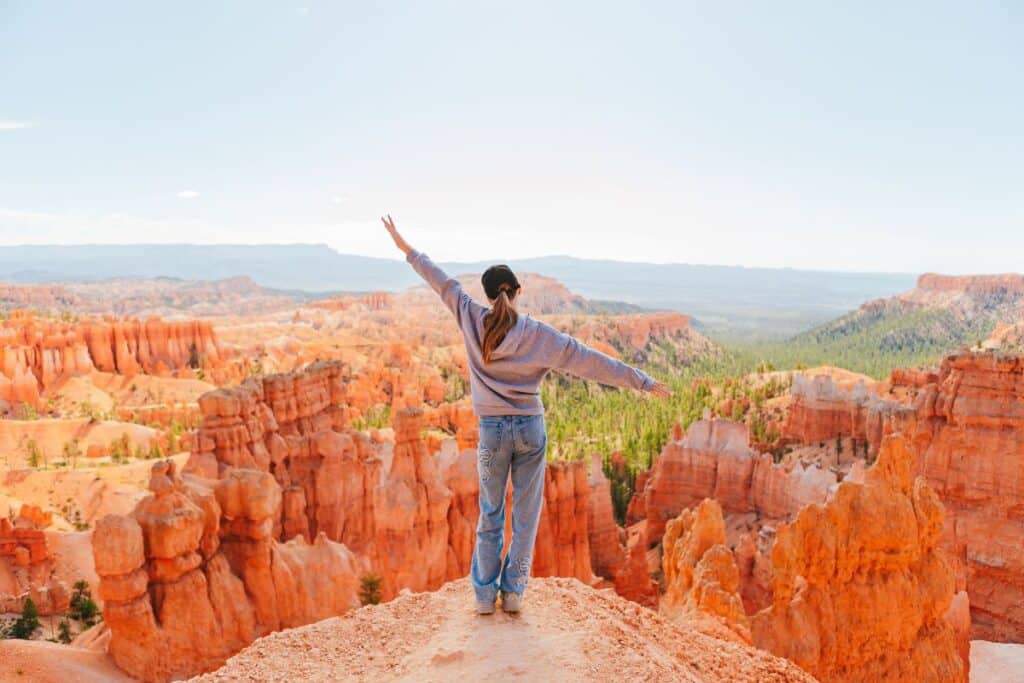
For more moderate hikes, the Queen’s Garden Trail is highly recommended. It’s approximately 1.8 miles round trip and descends into the amphitheater, giving hikers a close-up view of the hoodoos.
Another popular moderate trail is the Navajo Loop, about 1.3 miles, known for its famous Wall Street section, a narrow, switchback path between towering rock walls.
For the more adventurous, the Fairyland Loop and Peek-A-Boo Loop Trails offer a more challenging experience. These trails are longer, around 8 miles each, with more elevation change, but they reward hikers with less crowded paths and diverse scenery.
It’s important for hikers on these trails to be well-prepared with water, snacks, and proper footwear, as they venture deeper into the park.
The Annual Astronomy Festival
The Annual Astronomy Festival at Bryce Canyon is a highlight event, attracting astronomers and sky enthusiasts from around the world. This festival, usually held in June, leverages the park’s Dark Sky Park status to offer exceptional stargazing opportunities.
The event features a variety of activities, including night sky viewings through telescopes, astronomy talks, and workshops.
During the festival, experts and astronomers provide insights into the latest astronomical discoveries and techniques in stargazing.
The park’s natural amphitheaters serve as perfect natural observatories for viewing the night sky. Special programs for children are also available, making it a family-friendly event.
For those planning to attend the festival, it’s advisable to book accommodations well in advance, as the park and nearby areas tend to fill up quickly during this time.
The festival is not only an opportunity to gaze at the stars but also to learn about astronomy and appreciate the importance of preserving dark skies.
The Elevation Range of the Park
The elevation in Bryce Canyon National Park varies significantly, ranging from approximately 6,600 to 9,100 feet. This variation in elevation has a profound impact on the park’s climate and ecology.
Higher elevations tend to be cooler and receive more precipitation, which is why the top of the plateau can be covered in snow even when lower areas are not.
This elevation gradient creates distinct microclimates within the park. In the higher areas, visitors will find forests of spruce and fir, while the lower regions are characterized by Ponderosa pines and meadows.
The diverse range of elevations also supports a variety of wildlife; for instance, mountain lions are more commonly sighted in the higher, more remote areas of the park.
For visitors, this means that weather conditions can vary greatly depending on where they are in the park. It’s important to be prepared for cooler temperatures and changing weather, especially when hiking at higher elevations.
The varied elevation also offers different perspectives of the park’s famous hoodoos and landscapes, making it a unique feature that enhances the visitor experience.
The Role of Erosion in Shaping the Landscape
Erosion plays a pivotal role in sculpting the stunning landscapes of Bryce Canyon National Park. The primary agent of this erosion is water, particularly in the form of rain and snowmelt. Despite the arid climate, when water does fall, it seeps into the cracks of the limestone rock. As temperatures fluctuate, the water freezes and thaws, causing the rock to crack and eventually break apart, a process known as frost wedging.
Another significant erosional force is acidic rainwater, which slowly dissolves the limestone, carving intricate formations like hoodoos, fins, and arches. The park’s elevation and climate contribute to these processes, with higher areas receiving more precipitation and experiencing more freeze-thaw cycles.
For visitors, understanding erosion adds depth to their experience, as they witness a landscape that is still actively changing. Trails like the Navajo Loop and Queen’s Garden offer close-up views of these erosional processes at work. It’s a reminder that while the park’s features may seem permanent, they are in fact constantly evolving, shaped by the forces of nature.
The Park’s Fossil Record
Bryce Canyon National Park is not only a geological wonder but also a significant paleontological site. The park’s fossil record reveals a rich history of ancient life. Among the most notable fossils found here are those of marine creatures and amphibians, which date back to the Cretaceous period, over 65 million years ago.
These fossils indicate that the area, now a high plateau, was once a seabed. As the Earth’s plates shifted and the region rose, the environment changed dramatically, leading to the current landscape. The presence of these marine fossils at such a high elevation is a fascinating aspect for visitors, offering a tangible connection to the Earth’s ancient past.
The Bryce Canyon Visitor Center provides more information on the park’s paleontological history, including displays of some of the fossils found in the area. For those interested in geology and paleontology, this aspect of the park adds an educational and historical dimension to their visit.
The Importance of Preservation Efforts
Preservation efforts in Bryce Canyon National Park are crucial in maintaining its unique environment. The park is home to a delicate ecosystem, with its hoodoos and other geological formations being particularly susceptible to erosion and human impact.
Conservation initiatives focus on several key areas: protecting the park’s natural features from further erosion, preventing damage from human activities, and preserving the habitat for the diverse wildlife. Efforts include trail maintenance, habitat restoration, and visitor education programs to promote responsible park usage.
The park also participates in Dark Sky preservation, maintaining minimal light pollution for optimal stargazing conditions. This effort not only enhances the visitor experience but also plays a role in protecting nocturnal wildlife.
Visitors can contribute to these efforts by following park guidelines, such as staying on designated trails, not disturbing wildlife, and practicing Leave No Trace principles. By understanding and participating in these preservation efforts, visitors help ensure that Bryce Canyon’s breathtaking landscapes and diverse ecosystems are protected for future generations.
The Influence on Art and Culture
Bryce Canyon National Park has long been a source of inspiration in art and culture, captivating artists, photographers, and filmmakers with its unique landscape. The park’s hoodoos and vibrant color palette have been featured in various forms of art, from landscape paintings to modern photography. Artists often seek to capture the interplay of light and shadow on the rock formations, particularly during the golden hours of sunrise and sunset.
Photographers, both amateur and professional, are drawn to Bryce Canyon for its photogenic landscapes. The park’s viewpoints, like Sunrise Point and Sunset Point, offer ideal locations for capturing the stunning scenery. Additionally, the park’s status as a Dark Sky Park makes it a favored destination for astrophotography.
Filmmakers have also utilized Bryce Canyon as a backdrop for various films, particularly Westerns, where its landscapes have added dramatic effect to cinematic storytelling. The park’s influence on art and culture is a testament to its natural beauty and the inspiration it continues to provide to creative minds.
Visitor Center Exhibits and Resources
The Bryce Canyon Visitor Center is a treasure trove of information, offering a range of educational resources for visitors. The center features exhibits on the park’s geology, ecology, and history, providing a comprehensive overview of what makes Bryce Canyon unique. Interactive displays and informative panels are designed to engage visitors of all ages, making it an ideal starting point for first-time visitors.
The center also offers educational films, which are shown in its theater, providing insights into the park’s natural and cultural history. These films are particularly helpful for gaining a quick understanding of the park before exploring.
Additionally, the visitor center staff are a valuable resource for up-to-date information on trail conditions, weather forecasts, and park activities. They can also provide recommendations on hiking trails and viewpoints based on visitors’ interests and fitness levels. The visitor center’s bookstore offers maps, guidebooks, and souvenirs, making it a one-stop shop for both educational and practical needs.
The Experience of Winter in Bryce Canyon
Winter in Bryce Canyon National Park transforms the landscape into a snowy wonderland, offering a completely different experience compared to other seasons. The park’s famous hoodoos dusted with snow present a stunning visual contrast against the bright red rocks.
Winter activities in the park include snowshoeing and cross-country skiing, with the park often offering ranger-led snowshoe hikes. These activities provide a unique way to explore the park’s beauty in the winter months. The Fairyland Loop and Rim Trail are popular choices for snowshoeing, offering breathtaking views of the snow-covered hoodoos.
The park is generally less crowded during winter, offering a more solitary and peaceful experience. However, visitors should be prepared for cold temperatures and snow-covered trails. The park’s roads and trails may be subject to closures due to snow, so it’s important to check conditions and prepare accordingly.
Winter also offers excellent opportunities for photography, with the snow adding a new dimension to the landscape. The clear, crisp winter air can also enhance the park’s already spectacular sunrises and sunsets, making it a special time for photographers.
Final Thoughts
As our exploration of Bryce Canyon National Park comes to a close, it’s clear that this remarkable landscape offers far more than meets the eye.
From the awe-inspiring hoodoos shaped by the relentless forces of nature, to the ancient bristlecone pines and the vibrant night skies, Bryce Canyon is a testament to the wonders of the natural world.
Whether you’ve come for the hiking trails that cater to every skill level, the rich tapestry of cultural history, or the unique experiences offered by each season, this park is sure to leave a lasting impression.
Remember, the key to a truly memorable visit lies in appreciating not just the scenic beauty, but also the intricate processes and efforts that preserve this extraordinary environment.
We hope this guide helps you make the most of your journey to Bryce Canyon, creating unforgettable memories in this unparalleled corner of the world.

